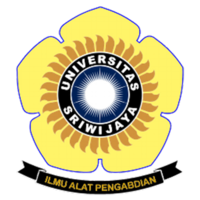Identifikasi Pencemaran pada Lahan Basah (Wetland): Baseline Data dalam Mengatasi Ancaman Lingkungan untuk Ketahanan dan Keamanan Pangan
Abstract
Hidayati NV. 2022. Identification of pollution in wetlands: baseline data in addressing environmental threats for food safety and security. In: Herlinda S et al. (Eds.), Prosiding Seminar Nasional Lahan Suboptimal ke-10 Tahun 2022, Palembang 27 Oktober 2022. pp. 27-39. Palembang: Penerbit & Percetakan Universitas Sriwijaya (UNSRI).
Wetlands include swamps, marshes, billabongs, lakes, salt marshes, mud flats, mangroves, coral reefs, and peat swamps. Located in the transition between aquatic and terrestrial environments and having features of both, wetlands are considered to be one of the most productive ecosystems in the world. Wetlands provide important ecosystem services that provide economic, social, environmental, and cultural benefits. On the other hand, wetlands act as traps for pollutants, including heavy metals, plastics, and pesticides. These pollutants come from point and non-point sources, both terrestrial and marine. Development activities, draining water, urbanization, industry, and poor agricultural practices have been the cause of pollution and even damage to wetlands and their ecosystem functions. Several studies show the accumulation of these pollutants in aquatic organisms, including consumption fish that enter through food webs. It is crucial to understand the accumulation of contaminants through food webs because once these pollutants reach consumers above them, including humans, they can produce chronic effects and even death. Thus, more serious attention needs to be given to wetland management within the framework of food safety and security.
Wetlands include swamps, marshes, billabongs, lakes, salt marshes, mud flats, mangroves, coral reefs, and peat swamps. Located in the transition between aquatic and terrestrial environments and having features of both, wetlands are considered to be one of the most productive ecosystems in the world. Wetlands provide important ecosystem services that provide economic, social, environmental, and cultural benefits. On the other hand, wetlands act as traps for pollutants, including heavy metals, plastics, and pesticides. These pollutants come from point and non-point sources, both terrestrial and marine. Development activities, draining water, urbanization, industry, and poor agricultural practices have been the cause of pollution and even damage to wetlands and their ecosystem functions. Several studies show the accumulation of these pollutants in aquatic organisms, including consumption fish that enter through food webs. It is crucial to understand the accumulation of contaminants through food webs because once these pollutants reach consumers above them, including humans, they can produce chronic effects and even death. Thus, more serious attention needs to be given to wetland management within the framework of food safety and security.
Keywords
wetlands, pollution, rehabilitation, microplastics, persistent organic pollutants
Full Text:
PDFArticle Metrics
Abstract view : 621 timesPDF - 3423 times
Refbacks
- There are currently no refbacks.

